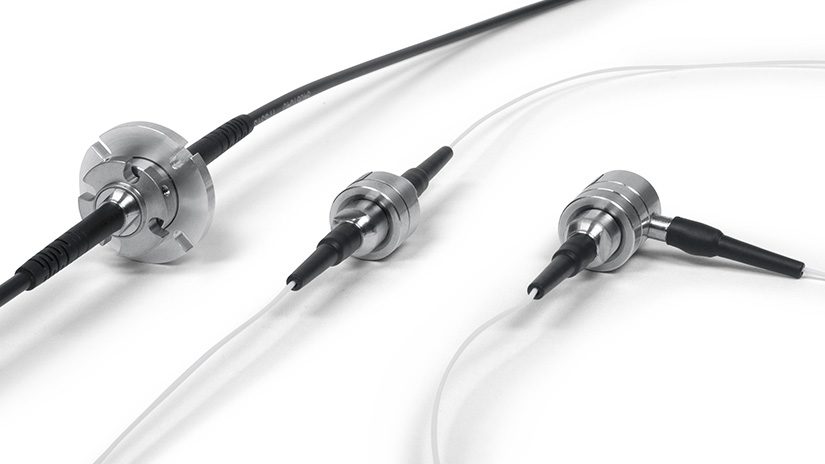Introduction:
If you’ve ever worked with fiber optics, you know there’s a lot that goes into making sure a connection is made. And it all starts with the joint. You see, the mechanics of making a good joint is essential for producing quality results and reliable performance.
Now, typically as a fiber-optic installer, you would be tasked with connecting two pieces of fiber together in order to create an optical splice or fiber optic joint. But if you’ve ever done this before, then you already know that this process can be tricky and requires expertise—from cleaning the fibers to the actual engineering of the joint itself.
In this article, we’ll provide an introduction to the mechanics of fiber-optic joints. We’ll dig into what makes up a good joint—from technical requirements to materials needed—and provide some tips on how to make sure your connections are up to manufacturer standards. Let’s jump right in!
What Are Fiber Optic Joints?
If you’re new to the world of fiber optics, you may not be familiar with what fiber optic joints are and how they work. Put simply, a fiber optic joint is a connection point between two pieces of optical fiber. It can be used to couple or couple-and-terminate two long strands of optical fibers for transmission purposes.
Fiber optic joints are important for building the basic structure of a fiber optics network. They allow technicians to connect multiple fibers and transmit data from one point to another without interruption. Plus, it’s an effective way to reduce losses in a fiber optics system, whether it’s connecting parts of a large system or running cables from one building or location to another.
In other words, if you want your fiber optics network to run smoothly and efficiently, you’ll need good quality fiber optic joint construction that is up to the task of handling both high speed data transmission and high demand stress loads.
How Do Fiber Optic Joints Work?
Fiber optic joints are essential components of any fiber optic network, allowing you to make reliable and secure connections between different fibers. There are a few key aspects of their mechanics that you should be aware of.
Firstly, the fibers must be held in place securely. Generally, this is done with epoxy glue and a mechanical hoop-style clamp to prevent the joint from slipping or coming undone if the joint is moved or jolted. The epoxy should be applied with great care, ensuring that it doesn’t enter other parts of the system and cause contamination.
Next, optical power loss needs to be kept to a minimum. To do so, it’s important to ensure that fiber ends are perfectly aligned before they’re connected together—this should best be done with a microscope. After alignment is complete, the fiber can be fusion spliced with an arc attachment for minimum power loss control.
Finally, keeping your fiber optic joints free from dust and external contaminants is essential for its smooth functioning as well as preventing any physical damage. Be sure to install protective covers on both sides of each joint for added assurance and reliability.
Different Applications of Fiber Optic Joints:
Fiber optic joints are a great choice for a variety of applications, including telecom, datacom, LAN networks, FTTX systems, and CATV. Let’s take a closer look at how fiber optic joints can benefit each of these applications.
Telecom:
Telecom networks are designed for the transmission of voice and data signals over long distances. In telecom applications, fiber optic joints are used to provide connecting ports between switching systems and transmission systems. The joints can also be installed in aerial, underground or submarine cable systems which require secure connections as they often operate in extreme environmental conditions.
Datacom:
In datacom applications, fiber optic joints allow different cables to interconnect and transfer data at high speeds. They are especially useful in data centers where multiple cables that span great lengths need to be connected in order to power the equipment used within the facility.
LAN Networks:
Fiber optics offer a secure connection when it comes to Local Area Networks (LANs). Fiber optic joint assemblies help improve network performance by reducing light dispersion associated with physical connections due to their unique design configuration and diameter variations of the cables used in the assemblies.
FTTX Systems:
FTTX (fiber-to-the-x) systems provide service directly to residential customers by connecting individual fibers from the central office to customer locations using passive optical components like connectivity boxes, splice closures and patch panels that are held together using fiber optic joints.
Cable Television (CATV):
Cable television companies use fiber optics extensively for their transmission infrastructure as they require large bandwidths and secure connections that traditional copper wires cannot provide. Fiber optical
Types of Fiber Optic Joint Connectors:
You might not know that there are different types of fiber optic joint connectors. While each connector type has its own unique benefits, they all serve the same purpose: to join two ends of a fiber cable. Here are the most commonly used types of fiber optic joint connectors:
SC connector:
The SC (Subscriber Connector) is small, simple to install, and designed for single-mode applications in either indoor or outdoor settings. It has a locking mechanism that snaps the connector into place, and can handle temperatures from -40°C up to +75°C.
ST connector:
The ST (Straight Tip) connector is popular for multi-mode applications due to its easy-to-install bayonet shape that locks into the adapter with a quarter turn. It can handle temperatures similar to the SC connector — between -40°C to +75°C — and is usually seen in patch panels or backbone cabling.
FC connectors:
FC (Ferrule Connector) is similar in shape and design to the ST connector except it’s slightly different as it uses a threaded adaptor for insertion as opposed to a snap-in one like with the ST. It’s also longer than an ST-style connector and is rated for both single and multimode applications.
LC Connector:
Last up, we have the LC (Local Connector), which stands out from other connectors because of it’s small form factor which makes it useful where space is limited such as in FTTH networks or inside devices like TV boxes or routers. You often see them used for plugging directly into active electronics equipment such as transceivers, switches
The Importance of Proper Installation:
When it comes to ensuring your fiber optic joint is effective and long-lasting, proper installation is key. You need to make sure that the fibers are in their correct place and that the connectors are securely fastened. If not, there may be a poor connection and data can be lost or the joint may be more susceptible to power fluctuations and environmental conditions.
Fortunately, the installation process for fiber optic joints isn’t difficult or time consuming—it just requires following a few simple steps:
- Measure the fibers using a micrometer to make sure they’re the correct length and diameter.
- Clean off any dirt or dust from both surfaces of the connector materials with a clean wipe.
- Connect one end of the fiber optic cable to the optical transceiver module interface body and then lock it with a locking screw.
- Finally, check that the adapter is firmly secured in place before testing its effectiveness using a fiber optic power meter or an OTDR (optical time-domain reflectometer).
By following these easy steps you can ensure your fiber optic joint is installed correctly, so it can do its job for years to come!
Factors to Consider When Choosing the Right Fiber Optic Joint:
When it comes to finding the right fiber optic joint, there are several factors to consider. By being mindful of these points, you can ensure that your fiber optic connection is reliable and secure.
Connector type:
First, decide which type of connector you need for your fiber optic joint. There are different shapes and sizes depending on the application, so take the time to research what’s best for you.
Environmental conditions:
It’s also important to consider the environment where the joint will be used. Is it outdoor or indoor? Is it a wet or dry location? Knowing where the joint is going and any potential physical damage that could occur is key in choosing a connector that can withstand those conditions.
Mechanical performance:
Finally, remember that optical joints rely on mechanical performance characteristics such as torque control, pull-off strength and durability under vibration or shock. Pick a connector that meets those requirements, too.
By taking all these factors into account while making your selection of the right fiber optic joint, you can have increased confidence in creating a secure connection between two optical fibers for any application.
Conclusion:
In conclusion, fiber optic joint technology is an impressive way to join two fiber optic cables quickly and securely. The technology is reliable and easy to use, making it a preferred option for many types of networks. Whether you need a joint for a home network or a large-scale business network, fiber optic joint technology is a smart option. Although it can seem intimidating at first, understanding the basics of fiber optic joints will help you make informed decisions when choosing the type of joint that’s best for your network’s needs.



































